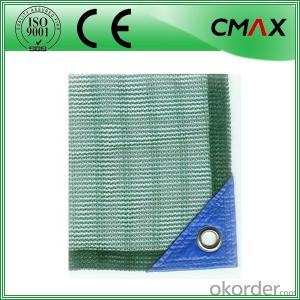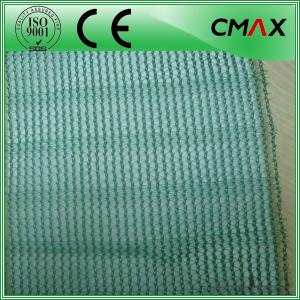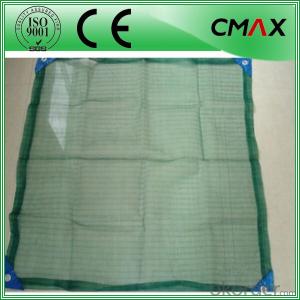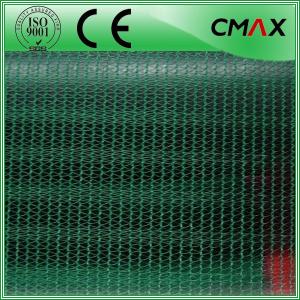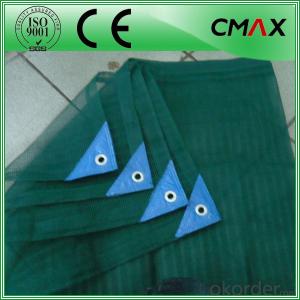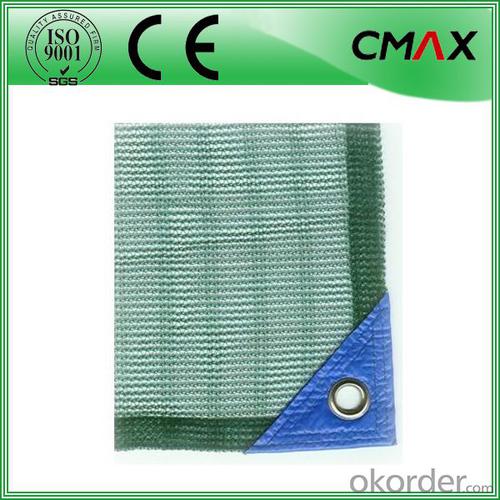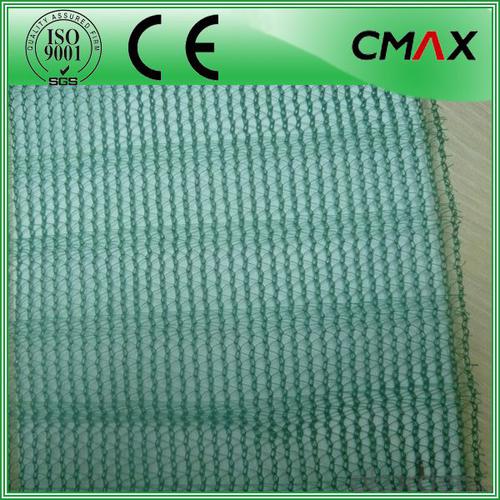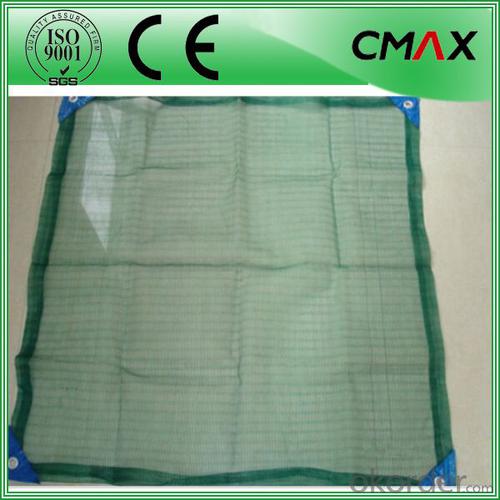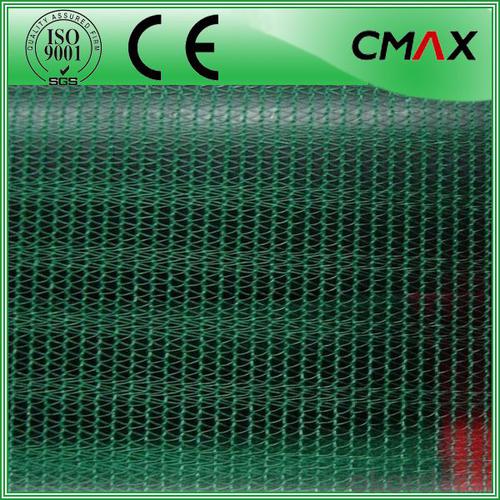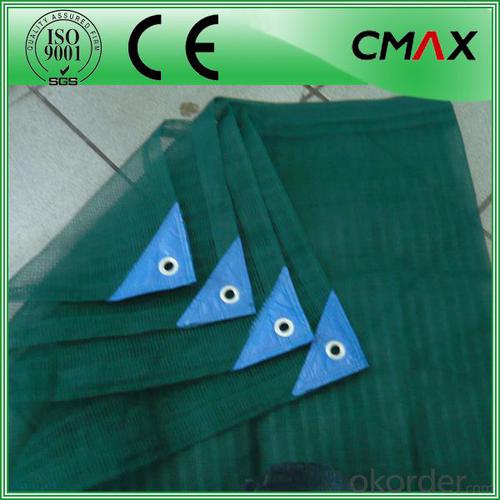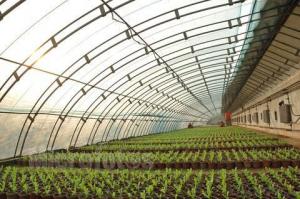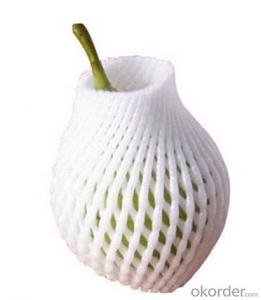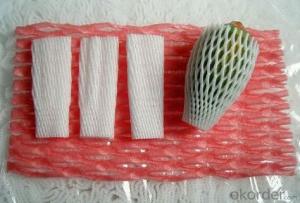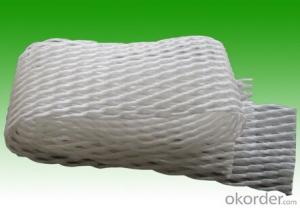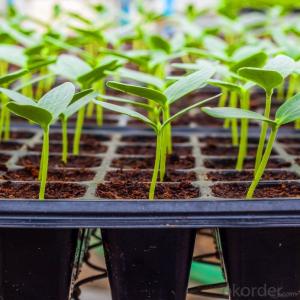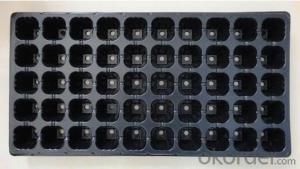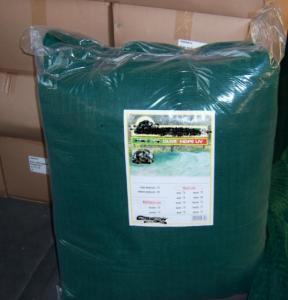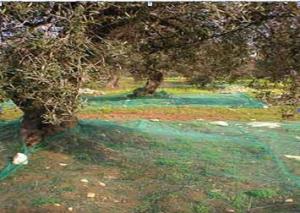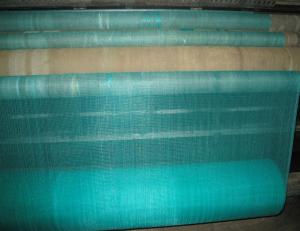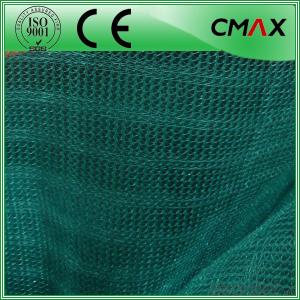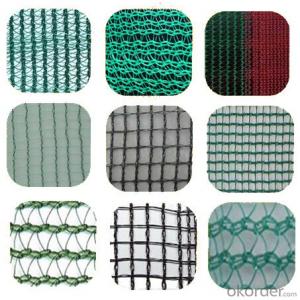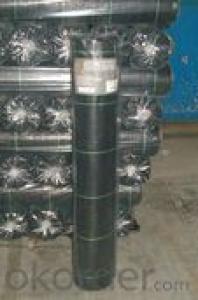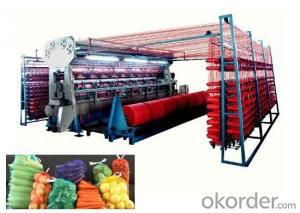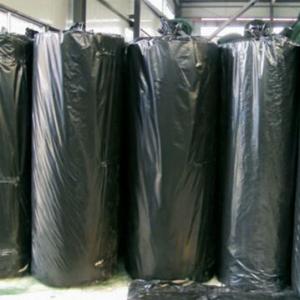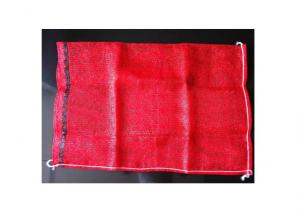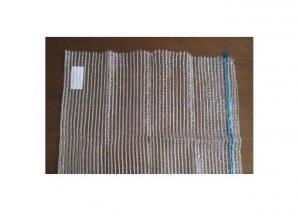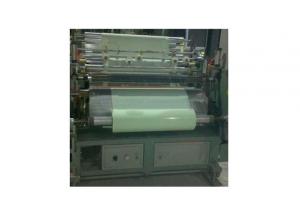New Products for Olive - Falling Fruit Harvesting Nets 50GSM
- Loading Port:
- Wenzhou
- Payment Terms:
- TT OR LC
- Min Order Qty:
- 300 m²
- Supply Capability:
- 1000000 m²/month
OKorder Service Pledge
OKorder Financial Service
You Might Also Like
New Products for Olive - Falling Fruit Harvesting Nets 50GSM
Production Description:
These nets are entirely made of UV stabilised polyethylene monofilament. The nets available have various kind of meshes in order to optimise the different harvesting methods of olives and fruits. Every net is suitable for a different application such as natural falling harvesting, hand harvesting or mechanised harvesting. The nets are available in different weights and colours and can be supplied in rolls or in sheets already stitched together with or without central vent.Olive collection net are used not only for the olive harvest, but also to gather chestnuts, nuts and deciduous fruits in general.
Produced with HDPE virgin material
UV stabilized - Long life
For Food : non-toxic, responsive to current European legislation on packaging for food.
Guarantee 5 years
Green&Black 50g/m2
Farmer used the net to gain olive from tree.
Specification:
| Type | CMAX-Olive Net |
| Weight | 33-200 gsm |
| Color | Black, Green, Dark Green, etc |
| Width,Length | 1-6m, 50m,100m as your requirements |
| Raw material | 100% Virgin HDPE with U.V Stabilized and irganox |
| Using life | At least 4 years |
| Delivery time | 30 days after deposit |
| Specification | construction(/inch) Warp=3, Weft=4.5, Br.Str.(kg) ,Warp=10, Weft=2 ,Screening factor(%) :10% |
| Packing | rolls with PVC suare tube(5×5cm)/double folded/PE Stretch film/label |
| OEM | If you have your own packing design,we can quickly meet your requirments. |
Application:

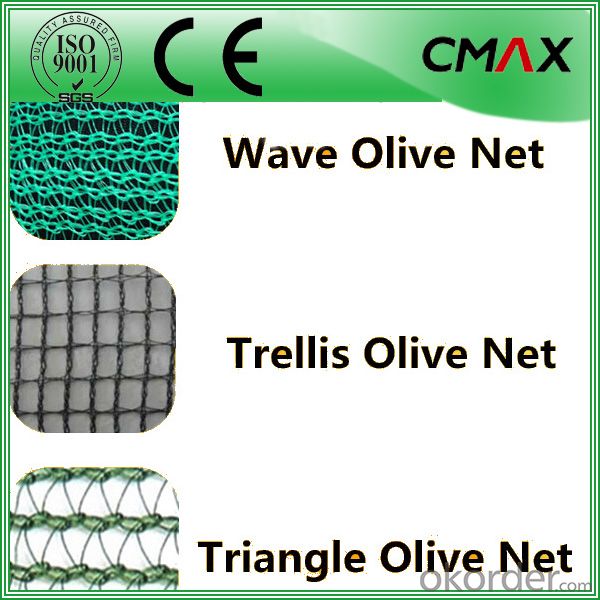
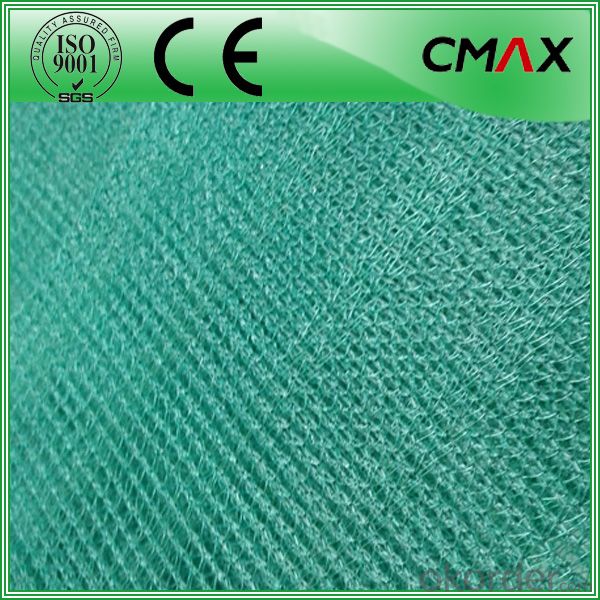
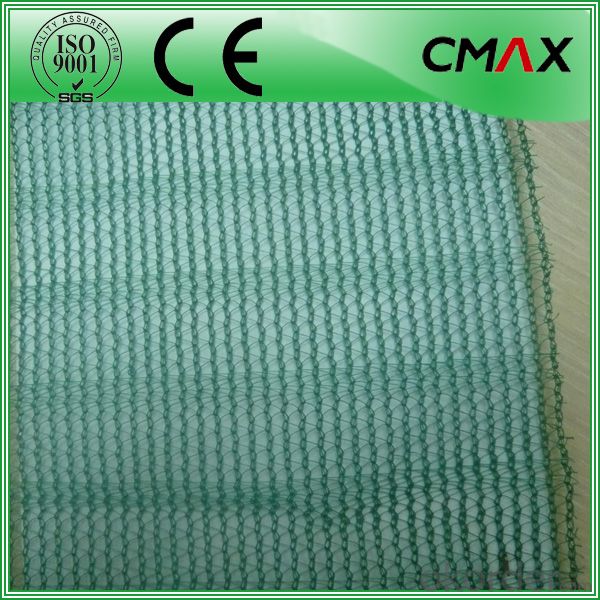
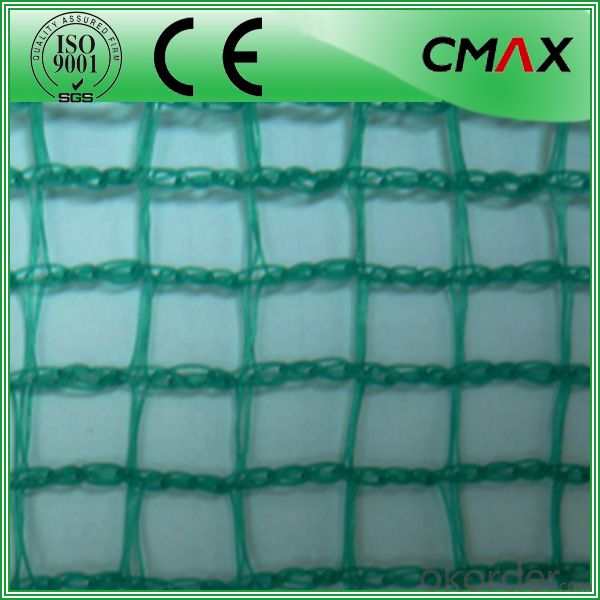
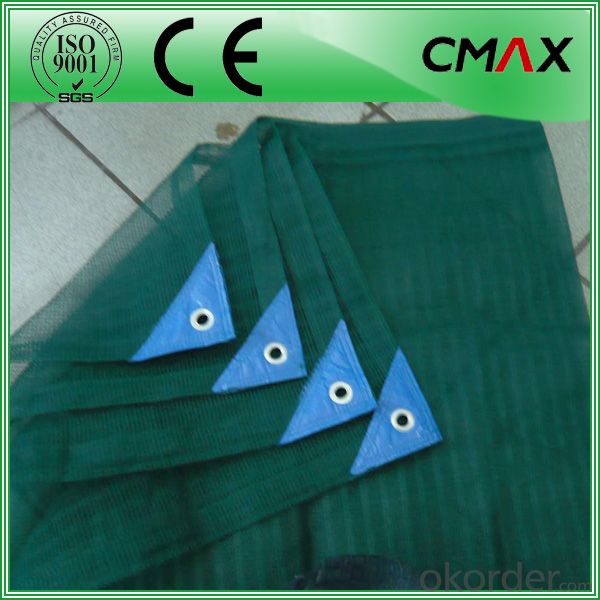
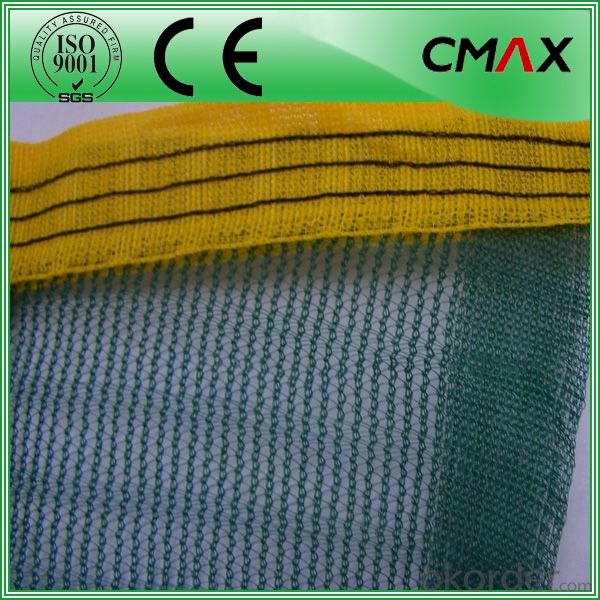
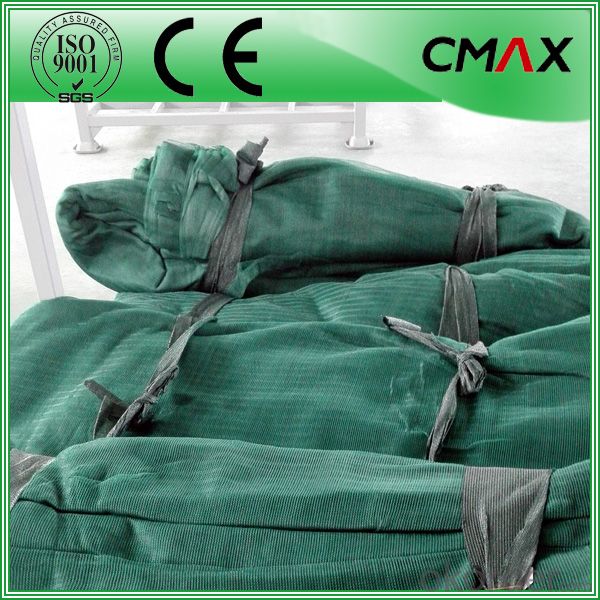
Process:
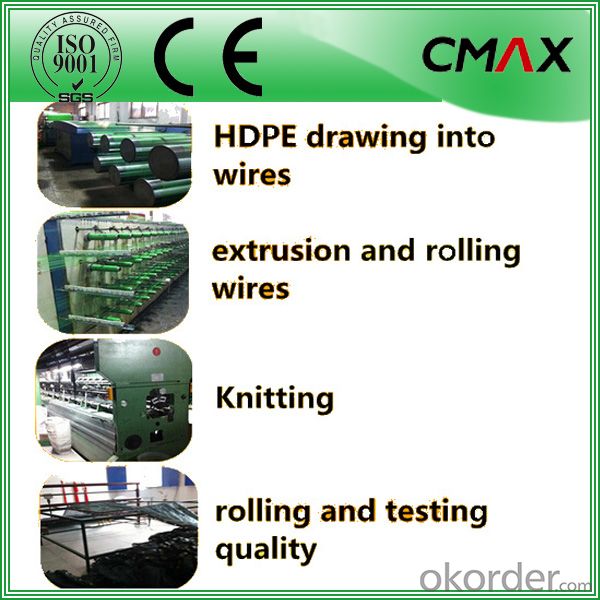
Shipping&Packing:
Delivery Time: 20 Working Days After Confirmed P.O.
Packaging: Each piece packed in plastic bag, and several pieces per bale with PP woven bag outside, or in rolls with inner paper tube with plastic bag outside.

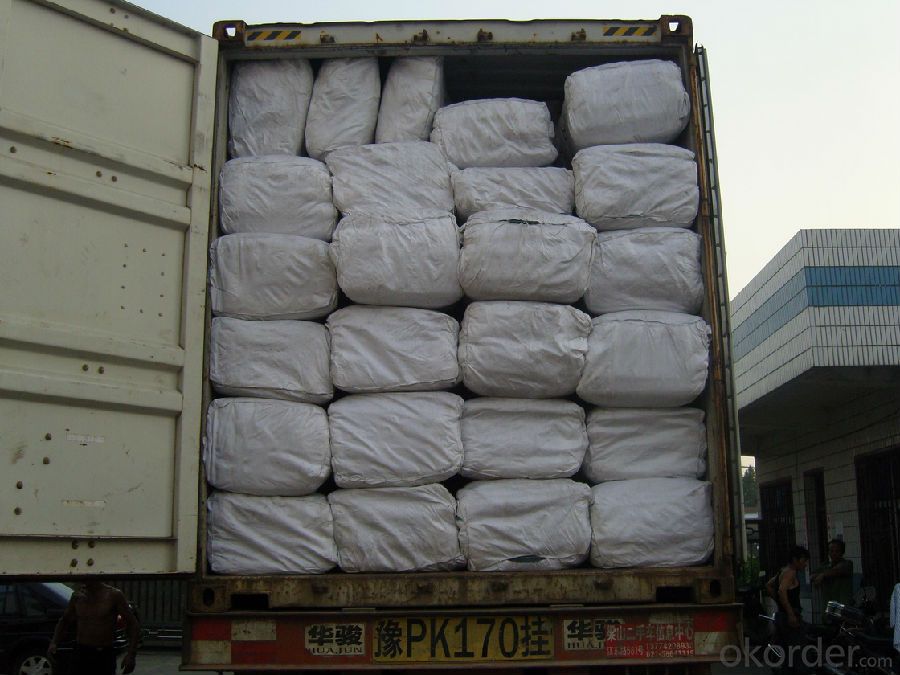
FAQ:
1.Q:Where is your factory located? How can I visit there?
A:Our factory is located in Shanghai, China. You can take flight to Shanghai Hongqiao airport, and 25 mins reach to our factory.
2.Q:What is the material of your products?
A: We use the raw material of High Density Polyethylene (HDPE) with UV Stabilized & Igranox to make our netting
3.Q:How does your factory do regarding quality control?
A: we are very proud to let you know that , We use the best raw material , have at least 5years experienced workers,
the advanced machine and specialized team to assure the quality
We perform Quality Control inspections on 100% of our products.
Our inspection standards are strictly in accordance with the ISO9001 certification system.
- Q: How does agricultural plastic affect crop spacing and plant density?
- Agricultural plastic can have both positive and negative effects on crop spacing and plant density. On one hand, plastic mulch or ground cover can help maintain consistent spacing between plants and improve plant density by suppressing weed growth and reducing competition for nutrients. Plastic mulch can also help conserve soil moisture, regulate soil temperature, and increase overall crop yield. On the other hand, improper or excessive use of plastic mulch can hinder plant growth, as it may restrict root development, limit air circulation, and impede water drainage. It is essential to carefully consider the type and application of agricultural plastic to ensure it enhances rather than disrupts crop spacing and plant density.
- Q: I'm really confused about this and hopefully someone on here can clear it up for me I'm reading a journal article and one of their procedures confused me. The researchers used a swab on dried saliva and then the swab was mixed in a plastic cuvet containing 2 mL of KCL solution and than the solution in the plastic cuvet was transferred to a quartz cuvet which was then used in a fluorescence spectrometer. My question is, why did they use a plastic cuvet and then transfer it? Why couldn't they used the quartz cuvet directly?THanks so much
- Plastic cuvettes are cheaper than quartz, for one! Did they mix the fluorescent dye in the plastic, too? I'd have to see what they were measuring, but you do know that plastic adsorbs certain materials that quartz will not. Perhaps there was some fraction of the saliva solution that they did not want transferred over. When doing antibody research, we routinely used plasticware to make the antigens stick to the plastic. That is a possible explanation.
- Q: Are nursery trays suitable for hanging plants?
- No, nursery trays are not suitable for hanging plants as they are designed for propagation and not for supporting the weight of hanging plants. Hanging plants require specific hanging baskets or pots with proper drainage and support systems.
- Q: I have a 2000 model green 300 Honda fourtrax and I want to paint the plastics white. Wondering what kind of plastic paint I need and what Linda prep work needs to be done like if I have to scuff it up or not. Please help
- Acrylic paints are plastic based and should fuse well with a plastic surface... you could scuff the surface if you wanted to (sand paper should be fine), but it isn't needed. Either way the paint may still be willing to chip off in places if damaged... The best thing to do is to clean the surface, making sure there's no dust or anything else, because any area with something (even microscopic) on it is more likely to chip than an area where the paint can directly touch the surface.
- Q: Obviously I know its from plastic, but where does THAT come from?
- plastics are polymers that can be molded or shaped, usually by heat or pressure. plastics can be either thermoplastics (can be melted and formed again and again) or thermosets which, once formed, are destroyed rather than melted by heating. composition can vary depending on the type of plastic, but most prominent are Hydro-Carbon (Hydrogen and Carbon)
- Q: This question asks about the methods farmers employ to safeguard their crops from frost damage using plastic covers in agriculture.
- <p>Farmers use agricultural plastic covers, often called frost protection covers or frost blankets, to insulate crops from frost damage. These covers are lightweight, transparent, and permeable to light, allowing photosynthesis to continue while trapping heat. They are typically placed directly on the plants or over rows using hoops or frames. At night, when temperatures drop, the covers reduce heat loss by forming a barrier that slows the escape of warm air. This helps to maintain a warmer microclimate around the plants, preventing frost formation. In the morning, the covers can be removed to let in fresh air and sunlight. This method is particularly effective for protecting tender crops like leafy greens, flowers, and early-season vegetables.</p>
- Q: I am putting down garden wooden decking.I know that i need to put down first some plastic sheet or viscose or something.Does it matter if the plastic is clear or black?why?
- Plastic is plastic, as long as it is UV rated so it doesn't lose the plasticisers to quickly and become brittle etc. I'm not sure why you are choosing to lay plastic underneath (i've never heard of it before and we have many decks at our various houses and none of them have plastic underneath...not even ones that are only a few inches above the soil, and we are in a temperate climate so plenty of water). The only reason i can think of would be water or weeds...but weeds will not grow underneath a deck because there is no light and any wood you are using should be treated (e.g perma pine) and therefore not matter if it gets moist. Infact laying plastic would mostly make the moisture problem worse by drying out the soil underneath causing contraction, and any water there would simply pool rather than soak into the ground having a worse affect on the wood.
- Q: Sometimes I end up with a plastic fork, spoon, and/or knife after getting take-out from a restaurant. I usually don't use it but I don't feel right just throwing it away. I could probably save it for another use but then I feel like I'm just packing away unnecessary junk. I do recycle plastic bottles, so can I just throw the utensils in with those?
- Recycled Utensils
- Q: Can nursery trays be used for growing annual flowers?
- Yes, nursery trays can be used for growing annual flowers. They provide a convenient and organized way to start seeds or propagate cuttings, allowing for easy transplanting once the plants are established. Additionally, nursery trays often have drainage holes and are designed to retain moisture, creating a favorable environment for successful growth of annual flowers.
- Q: How does agricultural plastic affect pest and disease control?
- Agricultural plastic can have both positive and negative effects on pest and disease control. On one hand, plastic mulch and covers can create a physical barrier that prevents pests from accessing crops, reducing the need for chemical pesticides. Plastic can also help to maintain optimal soil moisture and temperature, which can promote plant growth and resilience against diseases. However, improper disposal or mismanagement of agricultural plastic can lead to negative consequences. Plastic waste left in fields or water bodies can become breeding grounds for pests and disease vectors. Additionally, plastic residues left behind after crop harvest can harbor pathogens, potentially increasing the risk of disease transmission. Overall, the impact of agricultural plastic on pest and disease control depends on its proper use, disposal, and management practices.
Send your message to us
New Products for Olive - Falling Fruit Harvesting Nets 50GSM
- Loading Port:
- Wenzhou
- Payment Terms:
- TT OR LC
- Min Order Qty:
- 300 m²
- Supply Capability:
- 1000000 m²/month
OKorder Service Pledge
OKorder Financial Service
Similar products
Hot products
Hot Searches
Related keywords
